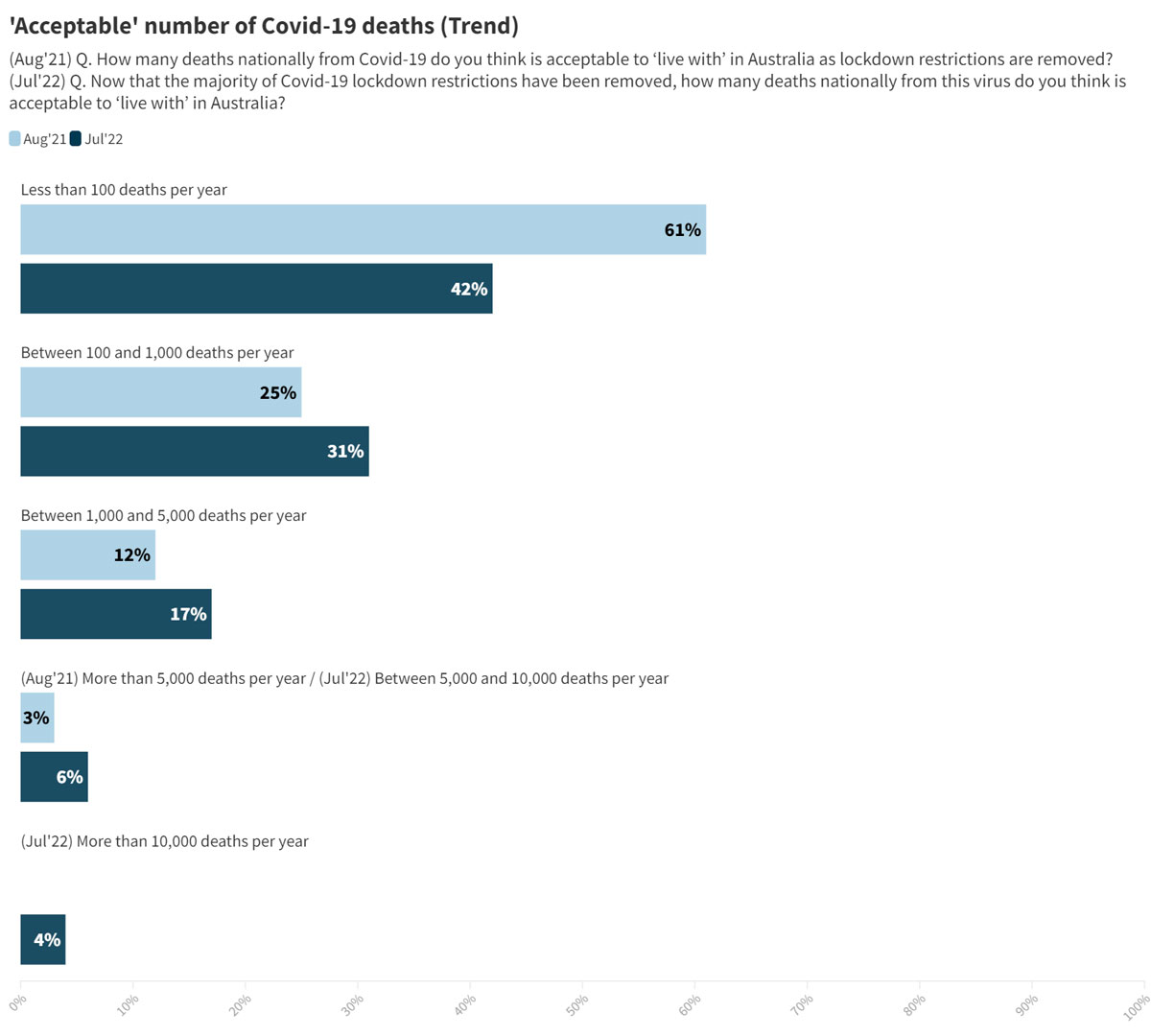The number of Australians sick in hospital with COVID-19 is rising fast, while a survey has indicated a new willingness from people to accept higher coronavirus fatalities.
Currently pushing 4500, admissions appear on track to eclipse a peak of 5391 set in January, when the country was in the grip of a deadly Omicron wave.
In a graph plotting daily hospitalisations, seen below, it is the steepness of the line which is now causing health officials grave concern.
READ MORE: Bali tourists face tougher airport checks as fears over disease grow
On average, 100 new patients are being admitted to hospital every day in July and that figure shows no sign of abating anytime soon.
There is already talk in Victoria of public hospitals being forced to suspend elective surgery programs so they can cope with the demand for beds.
As the BA.4 and BA.5 subvariants of Omicron have spread to become the dominant strain, daily cases and deaths have steadily risen, particularly in the heavily populated eastern states of New South Wales, Victoria and Queensland.
A virus expert told 9news.com.au two important parts of Australia's overall vaccination program were underperforming, creating room for the virus, and its subvariants, to thrive.
The slow take-up of third-shot boosters and a gaping vaccination hole in children aged five-11 was very worrying, Dr Vinod Balasubramaniam, a molecular virologist at Monash University's Malaysia Jeffrey Cheah School of Medicine, said.
Those factors, he said, opened up a soft underbelly in the country's protective shield.
Three in 10 eligible Australians have still not had a third booster, while just one in two children aged five-11 have had a first dose, despite having access since January 10.
"The numbers (in those groups) should be much higher," Balasubramaniam said.
He blamed vaccine fatigue and unfounded parental fears over the safety of vaccinating their children for those lower than ideal vaccination statistics.
Balasubramaniam said children who caught the virus could suffer from long COVID, so he was surprised so many parents had left their sons and daughters not fully protected.
Australia's very high overall vaccination rate as a country had created a "false sense of security" which was now hampering the booster program, he said.
READ MORE: Cruise ship with over 100 COVID-19 cases set to dock in Sydney
READ MORE: Rainy months here to stay, Indian Ocean index predicts
Balasubramaniam predicted coronavirus would continue to linger for years to come, unless the world vaccinated in unison, reducing the ability of COVID-19 to evolve.
Many countries in Africa have populations unvaccinated or with only one dose.
"Each time it is transmitted from one person to another, (the virus) constantly makes copies of itself in enormous numbers," Balasubramaniam said.
"And when that happens, the chances of mutations is extremely high."
Subvariants BA.4 and BA.5 were an example of those mutations.
Relaxation of mask and isolation restrictions was also increasing the rate of community transmission, Balasubramaniam said.
Australians now accept more COVID-19 deaths
It is clear Australians have become more tolerant of a higher death toll, according to a July survey examining attitudes about living alongside the virus.
Responding to a question of "how many deaths nationally from this virus do you think is acceptable to 'live with' in Australia", 17 per cent said between 1000-5000.
Compared to one year earlier, the number of people comfortable with that size death toll was up 5 per cent, according to the Essential Report survey.
READ MORE: One Aussie diagnosed with diabetes every 8 minutes, research reveals
READ MORE: Confusion over rules as COVID-19 cruise docks in Sydney
Throughout the survey, Australians showed a greater willingness to accept death.
Six per cent answered between 5000 and 10,000 annual deaths, up from three per cent the year before, while 4 per cent said more than 10,000 was acceptable.
The vast majority, 42 per cent, ticked fewer than 100 deaths, while 31 per cent said between 100 and 1000 fatalities.
BA.4 and BA.5 are more infectious than previous variants and appear to evade immunity from previous infections and full vaccinations.
Despite this, officials have said those people fully vaccinated are far less likely to suffer severe sickness or risk hospitalisation, if infected by BA4 and BA5.
Some vaccine makers are developing variant-specific vaccines to improve antibody responses against coronavirus variants and subvariants.
Words: Mark Saunokonoko
Interactive graphics: Tara Blancato
Source: 9News



